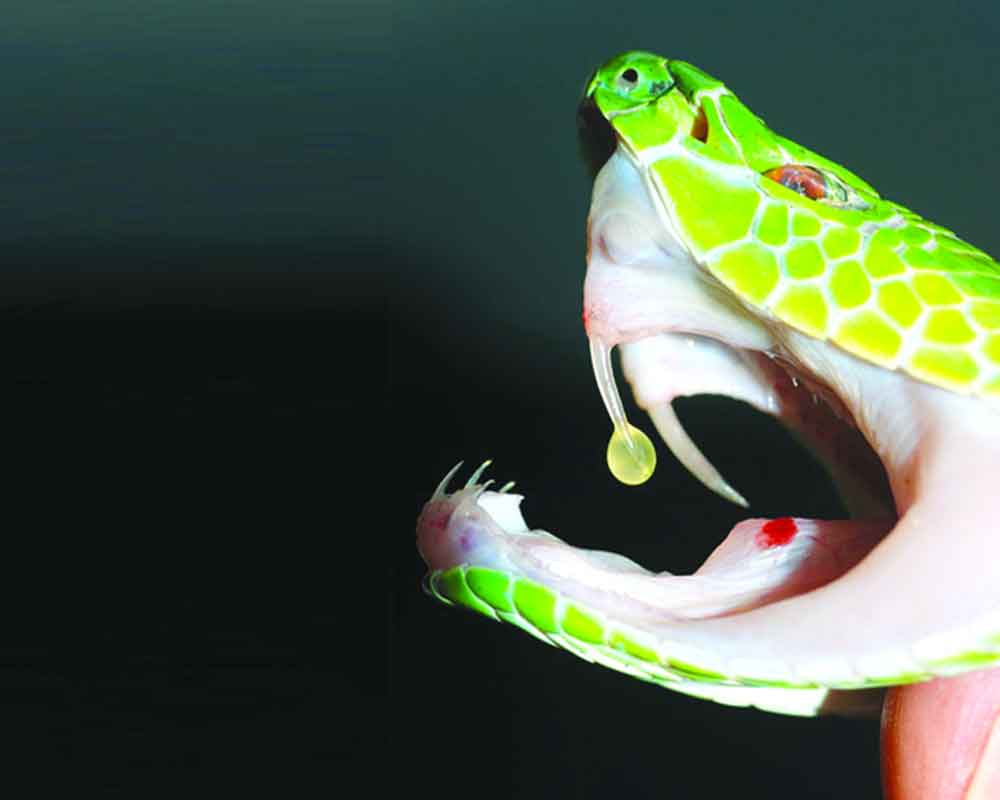As global momentum to tackle snakebite envenoming grows, immediate action across the WHO South-East Asia region is both possible and necessary. The opportunity to do so must be grasped to ensure the well-being and safety of all
Snakebite is a serious cause of disability and death in mostly poor, rural and hard-to-reach communities worldwide. Though just 250 of the 3,000 odd species of snakes are medically important, their impact can be devastating: Across the globe, snakebite envenoming is reported to cause the death of up to 1,38,000 people annually, while up to three times that number are estimated to suffer amputation, physical or psychological disability. The need to take action is clear and core to the principle of leaving no one behind.
The World Health Organisation (WHO) South-East Asia Region is particularly affected. Owing to the region’s sheer number of people (around 1.8 billion, or a little over a quarter of the world’s population), its many farming communities and the presence of a large number of venomous snakes, communities region-wide have long been vulnerable, with snakebite envenoming the cause of tens of thousands of deaths every year. The emotional, physical and financial costs are substantial, and cannot continue.
The good news? Global and regional momentum to tackle the problem is at a premium. In addition to the region’s own initiative and drive, last year’s World Health Assembly (WHA) endorsed a resolution to address the problem of snakebite envenoming. Among other things, the resolution recognised the need to improve access to safe, effective and affordable treatments for all people everywhere. This was particularly crucial given global shortages of anti-venoms that have hampered efforts to date and which WHO South-East Asia has been working to overcome by providing technical support and guidance on good manufacturing practices among other initiatives.
To help deliver on the resolution, just last month, on the sidelines of this year’s WHA, the WHO released a strategy for the control of snakebite envenoming that provides a roadmap to reduce snakebite-caused death and disability by 50 per cent before 2030. The roadmap will be rolled out in three phases, with an emphasis on developing strong, collaborative partnerships able to ensure long-term sustainability and continued commitment. To that end, coordinating investment and mobilising resources to drive impact at the country and community level will be central to the WHO’s work.
As the roadmap and the region’s own initiatives have made clear for many years, key interventions can be implemented to immediate effect. Ensuring that happens is critical to realising the region’s flagship priorities of combating neglected tropical diseases and accelerating towards universal health coverage, as well as its pursuit of several Sustainable Development Goals (SDGs), including SDG 3, to “ensure healthy lives and promote well-being for all at all ages.”
Most urgently, health authorities across the region should empower and engage communities on the issue by developing communication campaigns that contain messages on prevention, first aid and where and how to seek treatment. As sub-national programmes in several areas across the region have demonstrated, well-designed outreach initiatives can have remarkable impact in reducing snakebite incidence. Appropriate, trusted community leaders should be educated to disseminate key messages, mobilise buy-in and ensure all community members appreciate that the risk of snakebite envenoming can be mitigated effectively at the local level itself.
At the same time, member states should strengthen health systems to ensure snakebite envenoming can be treated in a timely and effective manner. Primary healthcare workers should be trained to identify and manage snakebite envenoming and, where appropriate (and until quality anti-venoms are available at the primary level), refer patients to better-equipped secondary and tertiary facilities. As part of this, member states should develop ways to cover the often-prohibitive costs of hospitalisation — whether that means providing services free of charge or ensuring treatment costs are covered by insurance schemes.
Crucially, countries should make snakebite envenoming a notifiable disease. This will generate valuable data that can help guide interventions, both in the near and long-term, and facilitate responsive, locally calibrated policy. Like other neglected tropical diseases, snakebite is often highly prevalent in specific areas and among specific communities, requiring concerted and ongoing action at the sub-national level. To ensure that happens, health authorities and civil society must secure continued high-level commitment to achieving the roadmap’s target and the public health imperative it represents: Leaving no one behind.
Achieving each of these outcomes is within the region’s grasp. The WHO is committed to supporting member states in their quest to harness global momentum to tackle snakebite envenoming and overcome the barriers that have persisted for too long. As the global drive to tackle snakebite envenoming grows, and systemic issues such as access to antivenoms are addressed, there is not a moment to lose in taking the steps needed to deliver immediate progress. Region-wide, the opportunity to do so must be grasped, and the health, well-being and safety of all secured.
(The writer is Regional Director, WHO South-East Asia)


























